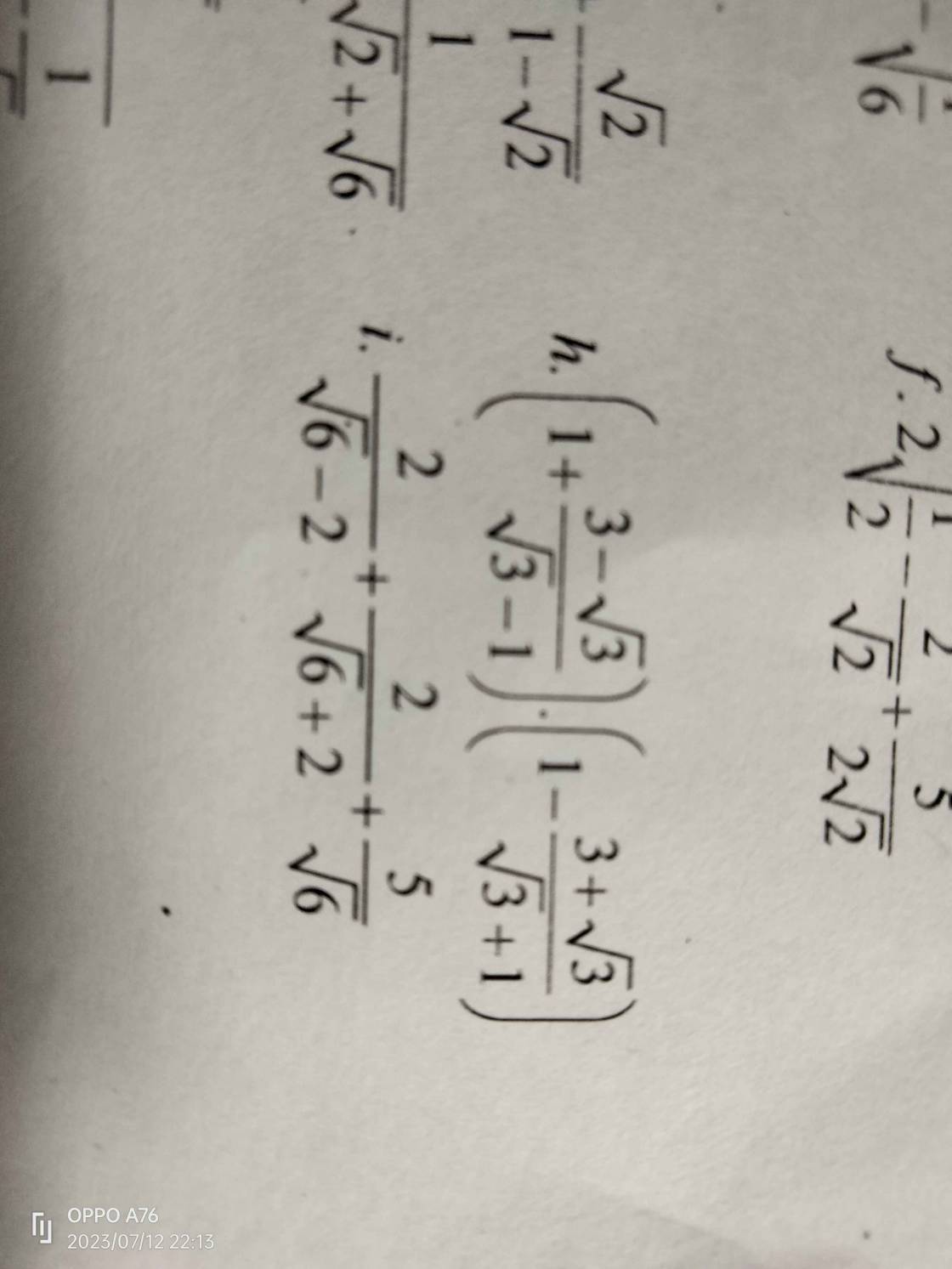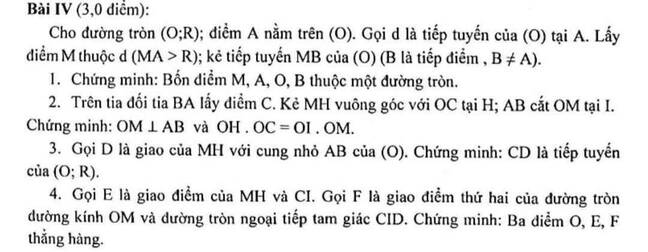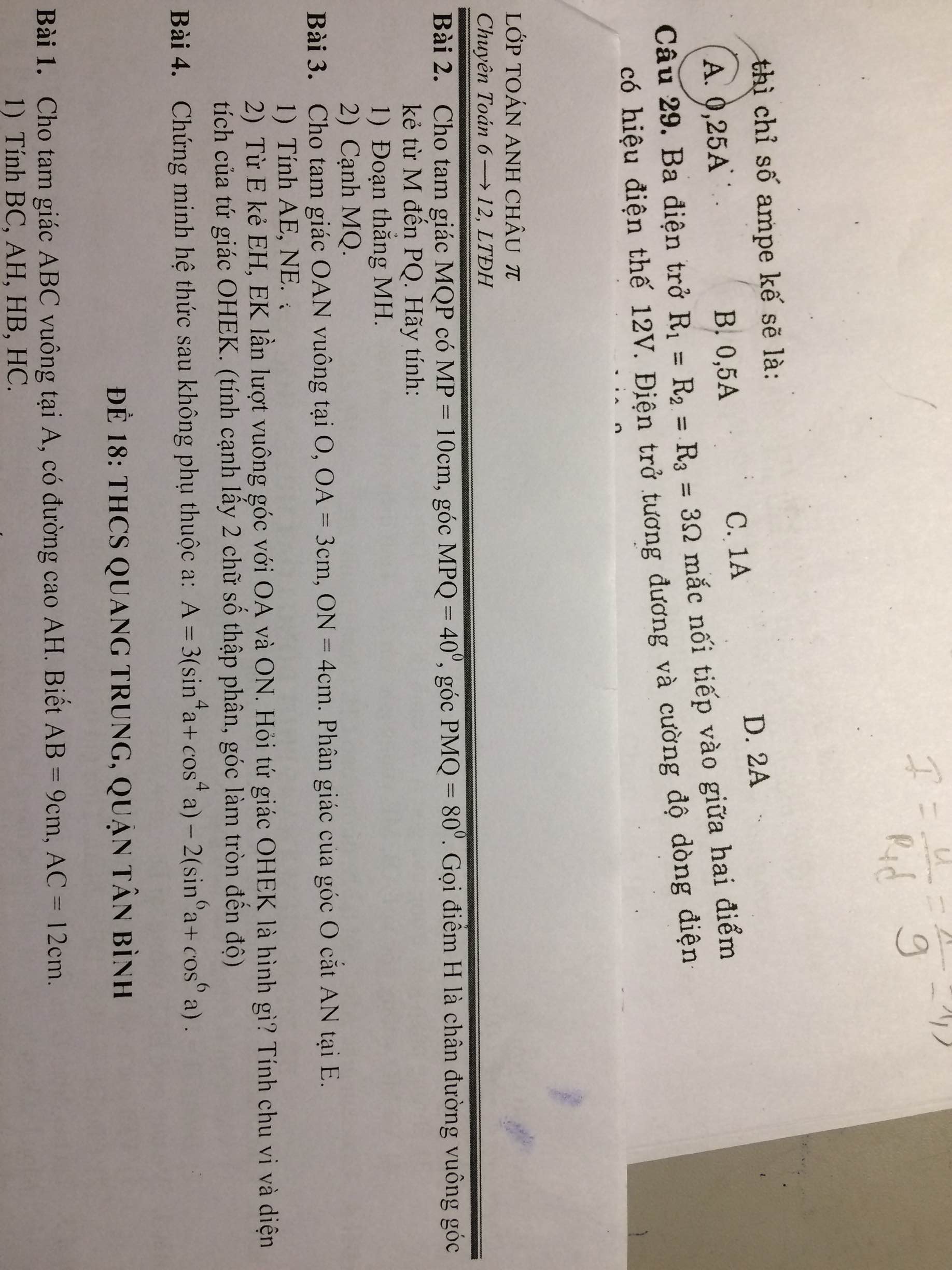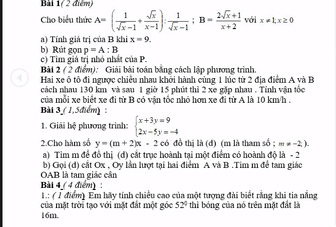Câu I:
1) Ta có: \(P=\left(\dfrac{\sqrt{x}}{\sqrt{x}-1}+\dfrac{\sqrt{x}+2}{\sqrt{x}}-\dfrac{x+\sqrt{x}-4}{x-\sqrt{x}}\right):\left(\dfrac{1}{\sqrt{x}+1}+\dfrac{2}{x-1}\right)\)
\(=\left(\dfrac{x}{\sqrt{x}\left(\sqrt{x}-1\right)}+\dfrac{\left(\sqrt{x}+2\right)\left(\sqrt{x}-1\right)}{\sqrt{x}\left(\sqrt{x}-1\right)}-\dfrac{x+\sqrt{x}-4}{\sqrt{x}\left(\sqrt{x}-1\right)}\right):\left(\dfrac{\sqrt{x}-1+2}{\left(\sqrt{x}-1\right)\left(\sqrt{x}+1\right)}\right)\)
\(=\dfrac{x+x+\sqrt{x}-2-x-\sqrt{x}+4}{\sqrt{x}\left(\sqrt{x}-1\right)}:\dfrac{\sqrt{x}+1}{\left(\sqrt{x}-1\right)\left(\sqrt{x}+1\right)}\)
\(=\dfrac{x+2}{\sqrt{x}\left(\sqrt{x}-1\right)}\cdot\dfrac{\sqrt{x}-1}{1}\)
\(=\dfrac{x+2}{\sqrt{x}}\)
2) Để P=3 thì \(\dfrac{x+2}{\sqrt{x}}=3\)
\(\Leftrightarrow x+2=3\sqrt{x}\)
\(\Leftrightarrow x-3\sqrt{x}+2=0\)
\(\Leftrightarrow x-\sqrt{x}-2\sqrt{x}+2=0\)
\(\Leftrightarrow\sqrt{x}\cdot\left(\sqrt{x}-1\right)-2\left(\sqrt{x}-1\right)=0\)
\(\Leftrightarrow\left(\sqrt{x}-2\right)\left(\sqrt{x}-1\right)=0\)
\(\Leftrightarrow\left[{}\begin{matrix}\sqrt{x}-2=0\\\sqrt{x}-1=0\end{matrix}\right.\Leftrightarrow\left[{}\begin{matrix}\sqrt{x}=2\\\sqrt{x}=1\end{matrix}\right.\Leftrightarrow\left[{}\begin{matrix}x=4\left(nhận\right)\\x=1\left(loại\right)\end{matrix}\right.\)
Vậy: Để P=3 thì x=4














 Mọi người giúp mình câu 3, câu 4 với. Mình cảm ơn ạ. Mình đang cần gấp lắm!!!
Mọi người giúp mình câu 3, câu 4 với. Mình cảm ơn ạ. Mình đang cần gấp lắm!!!








